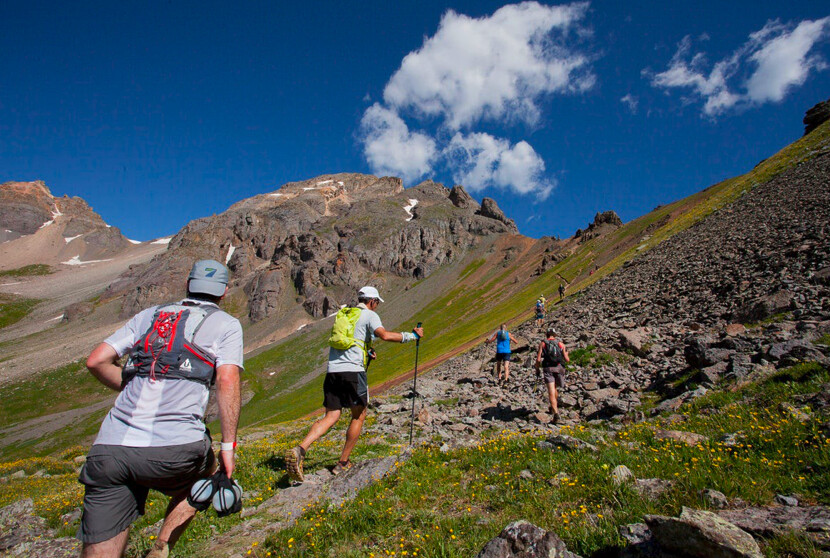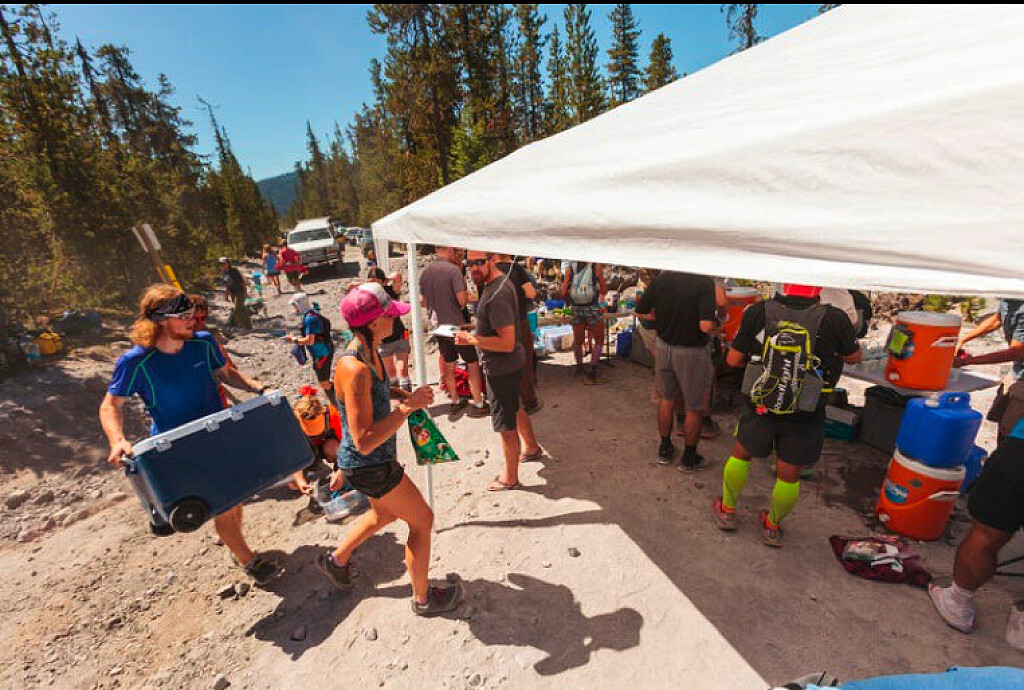Running News Daily
Running News Daily is edited by Bob Anderson in Mountain View, California USA and team in Thika Kenya, La Piedad Mexico, Bend Oregon, Chandler Arizona and Monforte da Beira Portugal. Send your news items to bob@mybestruns.com Advertising opportunities available. Over one million readers and growing. Train the Kenyan Way at KATA Running Retreat Kenya. (Kenyan Athletics Training Academy) in Thika Kenya. Opening in june 2024 KATA Running retreat Portugal. Learn more about Bob Anderson, MBR publisher and KATA director/owner, take a look at A Long Run the movie covering Bob's 50 race challenge.
Index to Daily Posts · Sign Up For Updates · Run The World Feed
The Dos and Don'ts of Pacing and Crewing an Ultra
Although trail running - especially ultramarathons - is often framed as a solo sport, ask any veteran of the 50-mile-and-above distances and they will tell you it most certainly is not.
There are dozens of people who help runners get from the start line to the finish, sometimes hundreds of miles later. Long before the race, those folks might look like physical therapists, coaches, nutritionists, and others. But during a race, the two most important types of people upon whom a runner depends: crew and their pacers.


Each role comes with challenges and requires preparation to best help the athlete.
Crewing
Crew members are the pit crew of ultrarunning. They stand ready at aid stations and checkpoints prepared to dole out food, water, basic first aid, dry socks, and new shoes. Maybe even a quick massage for tight muscles. Crew members must work efficiently as a unit to help their runner move through aid stations and get the support they need in a timely fashion.
Boise, Idaho-based Alexandria Otter had already crewed both a 50K and 100-miler before completing her first ultramarathon. Now, Otter primarily crews for her husband, noting they have their method "dialed in."
"I have individual plastic bags packed for each aid station to be as efficient as possible," said Otter. "When my husband comes into the aid station, he drops his pack, I unload all the garbage in his pockets, put one of those bags into his pack, and he heads out."
Before the race, crew members are given an info sheet that lists all the aid stations, a range of ETAs based on performance, current mileage, and elevation change.
Crew members should arrive before the race starts and be ready and willing to help their athlete from the very first moments of their day. That might mean providing or taking clothing layers, getting any pre-race water or nutrition, or even just being a smiling face among the nervous energy.
It's important that crew members arrive at each aid station as early as possible. The sooner a crew arrives at an aid station, the better the parking and spots to set up camp, and the less anxiety there will be among the crew.
Prime parking spots at aid stations are highly coveted because they allow for ease of access to supplies for your runner, as well as a convenient place for you to rest between traveling to the next aid station. A good parking spot also makes it easy to load up your supplies and head to the next station.
Arriving early at each aid station also gives you the opportunity to set up your runner's supplies in an optimal location, as close to the trail as is permitted. The last thing a runner wants, miles into their race, is to weave through others' setups to try to find their crew.
Crew members will often help each other out when it comes to setting up aid stations. It's typically a family atmosphere, not one of icy aloofness.
It's not uncommon to find crew members for a variety of runners helping each other set up chairs and tables, fill up water bottles, and lay out food for each runner. Likewise, the spirit around most aid stations is one of plenty. If a crew member forgot something like sunscreen, Bandaids, or salt tabs, most other crews will be more than happy to share their supplies.
Once the race is underway, crews may end up with a lot of time on their hands as runners traverse the course in between aid stations. And sometimes, the runner's plan doesn't shake out the way they hope it will.
"When I'm in between servicing our aid stations, I'll make sure to feed myself, find a bathroom; sometimes I'll even go for a hike or run from the aid station," said Otter. "I've met a lot of awesome people - and dogs! - just by hanging out near the aid stations, too."
The hardest part usually is post-race, when the runner, pacers, and crew are tired from a day(s) of getting the athlete from point A to point B. But someone still needs to collect the food and supplies from each aid station. Staying organized by managing the athlete's equipment in drop bags at each aid station makes things much easier when it's time to depart from each station or from the race as a whole.
Alyssa Godesky holds the Fastest Known Time (FKT) for the Long Trail in Vermont, the High Peaks in Adirondacks, and the High Peaks in New Hampshire. For each of her FKT attempts, she relied heavily on a stellar crew.
"The best crews are made up of people who know how to be both leaders and good teammates," said Godesky. "So many things can shift rapidly during a race or FKT and you need to trust your crew will adjust."
For example, maybe one of the crew's cars will break down and the other crew members will need to figure out a different way to get to the next aid station. Or maybe the athlete is taking longer - or going faster - than previously expected and aid station arrival times have changed. A crew needs to be flexible and ready to change plans at a moment's notice.
The most important thing a crew can have, according to Godesky? Endless optimism.
There will be points during an ultramarathon where a runner may lose their motivation to continue the race. The crew needs to remain relentlessly positive and solutions-oriented to remind the athlete of their "why" and get them excited to head back on the trail and keep going.
"If pacers and crew members were a family," said Godesky. "The crew members would definitely be the parents - nurturing, organized, and always ready to help."
Pacing
Pacers are an ultrarunner's eyes, ears, and sanity. Pacers generally come in in the later stages of a race when a runner may be too exhausted (or too loopy) to safely continue on their own. For 50 milers, that might be around the 30- or 35-mile mark. For 100-miles or longer, pacers may be required from the 50-mile mark on. They're also helpful when a runner is gunning for a certain time goal and may be struggling to hold that pace on their own. A pacer must be patient, encouraging, and be able to run, walk or shuffle alongside their athlete. It's not unheard of for pacers to be dropped by an athlete that's having the race of their life!
Ally Gregory got her start in ultras by volunteering more than 10 years ago - she had a firsthand view of trail and ultrarunning before she even ran a race. Today, the Chicago-based ultrarunner is a race director for trail events in Illinois and frequently serves as a pacer for her friends.
"The purpose of a pacer is to provide the runner with mental support and to literally keep them moving forward," said Gregory. "This entails knowing the race course - the route, elevation, distance between aid stations - monitoring the runner's well-being, and knowing when to push the runner and when to let them rest."
Pacing is like being a therapist, coach, and friend all wrapped up in one. It is not an easy job, especially during races that are 100 miles or longer. Gregory noted that a key part of being a top-notch pacer is understanding your athlete's communication style, their expectations and motivations for the race they're running, and most importantly, how to make them laugh, even at mile 80.
Godesky thinks of her requirements for pacers in two parts: physical traits and mental traits.
"I know I'm going to be in the best shape of my life when I attempt an FKT," said Godesky. "I need my pacer to not only be able to match my speed, but do so while potentially carrying my equipment, keeping track of nutrition and hydration schedules, and pushing me to go faster if necessary."
The most critical part of pacing is being able to match your athlete's fitness. You need to be able to navigate the pacing segment (which could be 20+ miles) without slowing your athlete. On the flipside, if your athlete is having a tough day, be prepared to shuffle or walk alongside your athlete, too. It helps to have previous trail running experience and confidence in your mental and physical tenacity. As tempting as it might be to immediately say "yes!" to pacing someone, it's OK to ask to give it some thought, too.
From a mental characteristics perspective, Godesky looks for pacers who have high levels of self-awareness and emotional intelligence and who are direct, concise communicators. These traits tend to yield folks who know when to push Godesky to press on and when to respect if she needs to slow up or pause.
"Basically, I look for people I can get along with for many hours in the middle of the woods," joked Godesky.
Not everyone you would love to have as a pacer should be a pacer. Taking into account both the physical and mental strengths of your pacers is paramount over asking close friends or family to be part of your pacing team.
Unlike crewing, pacing does not require you to be at the race start, and in fact, it's best to get the rest you need and wait to show up until it's time to roll. Pacers are called upon later in a race, so do your part to get enough rest, nutrition, and hydration in the hours before meeting up with your athlete.
Ultrarunning and trail running are solo sports with a big asterisk next to solo. There are loads of people who help a runner reach the start and end lines of not just a race, but their journey leading up to the race, as well.
The best way to learn about crewing and pacing is to immerse yourself in an ultramarathon or local trail race. Aside from pacers and crew members, trail races also need volunteers to assist with everything from aid stations to race day check in. Signing up to volunteer can give you a first-hand look at the ups and downs each runner faces across the race and how pacers and crew members react to best support their athlete.
"There's no better way to learn about the sport than jumping into the ultrarunning community," said Godesky. "Whether that's volunteering at a race, joining a local run club, or taking the plunge and running a race yourself, you will learn how to best pace and crew by being open to learning from experience."
Pacing and crewing are skill sets in and of themselves. Not being afraid to ask questions, volunteer, and hone your skills by joining the ultra community are key to becoming an invaluable pacer and crew member. You can find a run club (trail and/or road) by finding them through Facebook groups, asking your local run shop, or searching for nearby trail races to help you get started in the ultrarunning community.
(08/14/2022) Views: 2,813 ⚡AMPby Trail Runner Magazine




